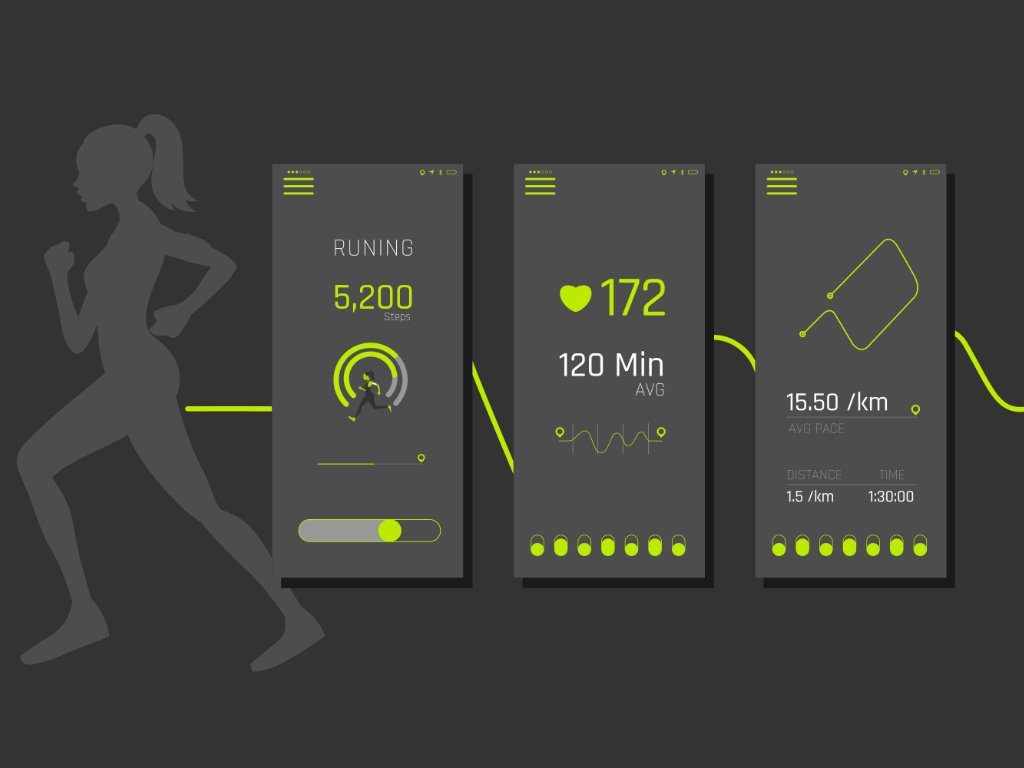Table of Contents
Ever wondered what the future of fitness holds? As we step into 2025, the fitness landscape is transforming faster than ever before. The 2025 fitness trends aren’t just about the latest workout fads – they’re reshaping how we think about health, wellness, and our relationship with exercise entirely.
From AI-powered personal trainers to biohacking your way to peak performance, this year promises innovations that’ll make your current gym routine look ancient. Whether you’re a fitness newbie or a seasoned athlete, understanding these emerging trends isn’t just helpful – it’s essential for staying ahead of the curve.
What Makes 2025 Fitness Trends Different?
2025 marks a pivotal moment in fitness history. We’re not just seeing incremental changes; we’re witnessing a complete paradigm shift. The American College of Sports Medicine’s annual survey of 2,000 industry professionals reveals that technology, personalization, and inclusivity are driving unprecedented changes in how we approach fitness.
The global fitness industry has evolved beyond traditional gym memberships and group classes. Today’s fitness enthusiasts demand personalized experiences, seamless technology integration, and flexible options that fit their increasingly complex lifestyles. The old “one-size-fits-all” approach? It’s officially dead.
How is Digital Technology Revolutionizing Fitness in 2025?
Wearable Technology Takes the Crown
Wearable technology has claimed the number one spot among 2025 fitness trends, and honestly, it’s not hard to see why. These aren’t just fancy step counters anymore – we’re talking about sophisticated health monitoring systems that provide real-time insights into your body’s performance.
With revenues projected to hit US$45.66 billion in 2025, and US$32.05 billion in 2025, fitness trackers and smartwatches are becoming increasingly intelligent. Modern devices can monitor everything from your heart rate variability to your sleep quality, offering actionable recommendations that actually help you achieve your goals.
The game-changer? Predictive analytics. Your wearable doesn’t just tell you what happened yesterday – it helps predict what your body needs tomorrow. Feeling stressed? Your device might suggest a gentle yoga session. Recovered from yesterday’s intense workout? It’ll recommend pushing harder today.
Mobile Apps: Your Pocket-Sized Personal Trainer
Ranked as the second most significant trend for 2025, mobile exercise apps have evolved from simple workout timers to comprehensive fitness ecosystems. These apps now offer:
- Personalized workout plans that adapt based on your progress
- Real-time form correction using your phone’s camera
- Social features that connect you with workout buddies worldwide
- Integration with your favorite wearable devices
The best part? Many of these apps use machine learning to understand your preferences, schedule, and fitness level, creating a truly customized experience that rivals expensive personal training sessions.
AI Integration: The Future is Here
Artificial intelligence isn’t science fiction anymore – it’s your new workout buddy. AI personal trainers are becoming increasingly sophisticated, offering coaching that adapts in real-time based on your performance, mood, and goals.
Think about it: an AI trainer never gets tired, never has bad days, and can analyze thousands of data points to optimize your workout in ways human trainers simply can’t match. But here’s the thing – it’s not about replacing human connection; it’s about enhancing it with data-driven insights.
Why Are Hybrid Fitness Models Dominating 2025?
The Best of Both Worlds
The pandemic taught us something valuable: flexibility isn’t just nice to have – it’s essential. Hybrid fitness models combine the convenience of home workouts with the energy and equipment of traditional gyms, creating a seamless fitness experience.
This approach acknowledges a simple truth: sometimes you want the motivation of a group class, sometimes you prefer the privacy of your living room, and sometimes you need that heavy equipment only a gym can provide. Why choose when you can have it all?
Virtual Training Gets Real
Virtual and hybrid training programs are no longer emergency pandemic solutions – they’re permanent fixtures in the fitness landscape. Recent industry analysis shows that successful fitness facilities are those that seamlessly blend digital and physical experiences.
The technology behind virtual training has improved dramatically. High-definition cameras, interactive displays, and real-time feedback systems make online classes feel almost as engaging as in-person sessions. Plus, you can join that exclusive yoga class in California while sitting in your New York apartment.
Hybrid Memberships: More Bang for Your Buck
Fitness facilities are responding with hybrid membership models that offer both physical access and digital content libraries. Members can attend in-person classes, access online workouts, and even book virtual one-on-one sessions with trainers – all under one membership.
This model works because it meets people where they are. Traveling for work? Access your gym’s app. Weather’s terrible? Stream that HIIT class from home. Want to try something new? Join an online specialty workshop without committing to a full program.
What Specialized Programs Are Trending in 2025?
Exercise Programs for Older Adults: The Silver Revolution
Ranked as the third most important trend for 2025, exercise programs for older adults represent a massive shift in how we think about fitness across the lifespan. The baby boomer generation isn’t slowing down – they’re demanding fitness programs that match their energy and ambition.
These specialized programs focus on:
- Functional movements that improve daily living
- Balance and stability training to prevent falls
- Low-impact strength training that protects joints
- Cognitive fitness exercises that support brain health
What’s exciting is how technology enables these programs. Specialized apps can track medication schedules, monitor vital signs, and even detect unusual activity patterns that might indicate health concerns.
Inclusivity: Fitness for Every Body
The fitness industry is finally waking up to a reality that should’ve been obvious all along: fitness is for everyone. The 2025 trends emphasize inclusivity across dimensions of age, ability, body type, gender identity, and socioeconomic background.
This isn’t just feel-good marketing – it’s smart business. When fitness facilities and programs become truly accessible, they tap into previously underserved markets while creating more welcoming environments for everyone.
Practical inclusivity looks like:
- Adaptive equipment for people with disabilities
- Body-positive messaging that celebrates all achievements
- Sliding-scale pricing to make fitness financially accessible
- Diverse representation in marketing and instruction
How is Functional Training Evolving in 2025?
Real-World Fitness Applications
Functional fitness continues gaining momentum because it asks a simple question: what’s the point of being strong in the gym if you can’t carry groceries up the stairs? This training philosophy prioritizes movements that transfer to daily life activities.
Instead of isolating individual muscles, functional training teaches your body to work as an integrated system. Think squats that improve your ability to get up from chairs, or rotational movements that help with everything from golf swings to picking up children.
Leading fitness experts emphasize that functional training isn’t just for athletes – it’s for anyone who wants to maintain independence and quality of life as they age.
Low-Impact, High-Results Workouts
Low-impact workouts are having their moment, and it’s about time. These gentler approaches to fitness prove that you don’t need to beat up your body to see results. Swimming, cycling, yoga, and Pilates are being reimagined with cutting-edge techniques and technology integration.
The appeal is obvious: sustainable fitness that doesn’t leave you hobbling for days afterward. Plus, low-impact doesn’t mean low-intensity. Modern program design can make a yoga flow or swimming session as challenging as any high-impact workout.
For those interested in comprehensive home fitness solutions, home workout routines for body transformation offer excellent low-impact alternatives that complement these trending approaches.
What Role Does Wellness Integration Play in 2025 Fitness?
The Biohacking Revolution
Biohacking represents the intersection of fitness, technology, and self-experimentation. It’s about using data and science to optimize every aspect of your health and performance. Think continuous glucose monitors for non-diabetics, cold therapy protocols, and sleep optimization techniques.
The biohacking movement appeals to people who want to take control of their health destiny. Instead of accepting “normal” as good enough, biohackers use metrics and experimentation to push their bodies toward optimal function.
Popular biohacking techniques include:
- Heart rate variability training for stress management
- Cold exposure therapy for recovery and resilience
- Nutritional timing based on circadian rhythms
- Light therapy for mood and sleep optimization
For those interested in supporting their biohacking journey, understanding muscle recovery supplements to speed up gains can provide valuable insights into optimizing recovery protocols.
Data-Driven Training Technology
Featured in the top 10 trends for 2025, data-driven training represents a more scientific approach to fitness. Instead of guessing whether your workout was effective, you get real-time feedback on everything from power output to recovery status.
This technology enables precision training – workouts that are precisely calibrated to your current capacity and goals. Too often, people either under-train (and see minimal results) or over-train (and risk injury). Data-driven approaches find that sweet spot where progress happens safely and efficiently.
Modern gym equipment increasingly includes built-in sensors and connectivity that automatically track and analyze your performance. Some systems can even adjust resistance or suggest modifications mid-workout based on how you’re performing.
How Are These Trends Impacting the Fitness Business?
Market Growth and Opportunities
The numbers don’t lie: the global fitness center market exceeds $90 billion, while the fitness equipment market is projected to reach $19.2 billion by 2025. These figures highlight massive opportunities for businesses that align with emerging trends.
Research shows that facilities investing in technology integration, personalized services, and inclusive programming are seeing higher member retention and revenue growth.
Technology Investment Strategies
Fitness facilities that thrive in 2025 are those that view technology as an investment, not an expense. Modern members expect:
- Seamless app integration for booking, payment, and tracking
- High-quality virtual class options when they can’t make it in person
- Personalized recommendations based on their goals and preferences
- Community features that help them connect with like-minded members
The facilities that resist these changes risk becoming irrelevant as more tech-savvy competitors enter the market.
The Personalization Premium

AI-powered personalization tools are driving higher retention rates and increased revenue per member. When people feel like their fitness experience is tailored specifically to them, they’re more likely to stick with it long-term.
This personalization extends beyond workout programming to include:
- Customized nutrition recommendations that complement training goals
- Flexible scheduling options that work with individual lifestyles
- Progressive goal setting that adapts as people achieve milestones
- Community matching that connects people with similar interests and goals
For comprehensive guidance on creating personalized wellness approaches, ultimate balanced diet guidelines provide excellent foundation knowledge that complements personalized fitness programming.
What Should Fitness Professionals Know About 2025 Trends?
Evolving Role of Trainers
The fitness professionals who’ll thrive in 2025 are those who embrace their evolving role. Instead of just counting reps and providing motivation, successful trainers are becoming wellness coaches, technology integrators, and lifestyle consultants.
This expanded role includes:
- Understanding how to integrate wearable device data into programming
- Providing guidance on recovery, sleep, and stress management
- Adapting training for hybrid delivery models
- Supporting clients’ broader health and wellness goals
Continuing Education Priorities
Smart fitness professionals are investing in education around:
- Technology integration and data interpretation
- Specialized populations like older adults or people with chronic conditions
- Mental health and stress management techniques
- Nutrition science and behavior change strategies
The most successful professionals understand that their expertise extends beyond exercise science to encompass holistic wellness approaches.
What Challenges Do These Trends Present?
Technology Overwhelm
While technology offers incredible opportunities, it can also create decision paralysis. With thousands of fitness apps, devices, and platforms available, how do you choose the right ones?
The key is starting simple and building complexity gradually. Focus on one or two technologies that align with your specific goals rather than trying to use every new gadget that hits the market.
Maintaining Human Connection
As fitness becomes increasingly digital, there’s a risk of losing the human connection that makes exercise enjoyable and sustainable. The most successful programs find ways to leverage technology while preserving the community and support that make fitness fun.
Accessibility and Equity
While technology can make fitness more accessible in some ways, it can also create new barriers. Not everyone has access to high-speed internet, expensive devices, or the digital literacy needed to navigate complex apps.
Successful fitness businesses in 2025 will be those that use technology to increase accessibility rather than create new forms of exclusion.
Frequently Asked Questions About 2025 Fitness Trends
What are the most important fitness trends for 2025?
The most significant trends include wearable technology, mobile fitness apps, AI integration, hybrid training models, and specialized programs for older adults, according to industry research.
How will AI change personal training?
AI will enhance personal training by providing data-driven insights, personalized programming, and real-time form feedback, but won’t replace human trainers entirely.
Are virtual fitness classes here to stay?
Yes, virtual and hybrid fitness models have become permanent fixtures, offering flexibility and accessibility that traditional gym-only models can’t match.
What makes functional fitness different from traditional workouts?
Functional fitness focuses on movements that translate to daily life activities, emphasizing integrated body movements rather than isolated muscle training.
How can older adults benefit from 2025 fitness trends?
Specialized programs for older adults incorporate technology for safety monitoring, focus on functional movements for daily living, and emphasize low-impact approaches that protect joints while building strength.
What is biohacking in fitness?
Biohacking involves using data, technology, and self-experimentation to optimize health and performance beyond traditional fitness approaches.
How important is data in modern fitness?
Data-driven training is among the top trends, enabling precise workout calibration, progress tracking, and personalized recommendations that improve results and reduce injury risk.
What should I look for in a 2025-ready gym?
Look for facilities that offer hybrid membership options, modern technology integration, inclusive programming, and personalized services powered by data analytics.
Embracing the Future of Fitness
The 2025 fitness trends represent more than just industry evolution – they’re creating opportunities for more personalized, accessible, and effective approaches to health and wellness. Whether you’re drawn to cutting-edge biohacking techniques, prefer the reliability of functional training, or excited about AI-powered personalization, there’s never been a better time to explore what fitness can offer.
The key to success in this new landscape isn’t about adopting every trend that emerges. Instead, it’s about understanding which innovations align with your goals, lifestyle, and preferences, then integrating them thoughtfully into your wellness journey.
As we move through 2025, remember that the best fitness program is still the one you’ll actually stick with. Technology, personalization, and innovative programming are tools to help you find and maintain that consistency – but they’re not magic solutions that replace the fundamental requirement of showing up and doing the work.
For those ready to dive deeper into comprehensive wellness approaches, exploring complete guide to general health can provide valuable context for integrating these fitness trends into a broader health strategy.




